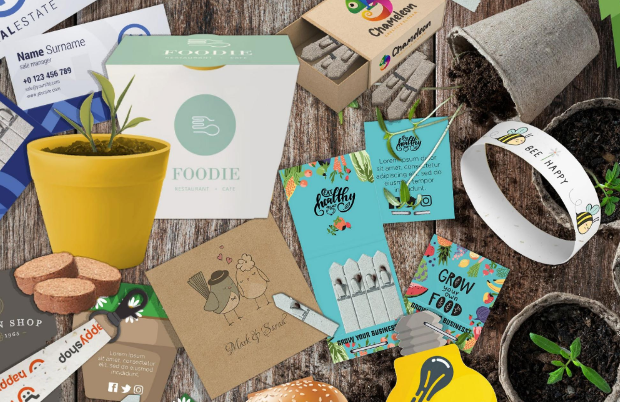5 Eco-Friendly Promotional Products That Make a Difference
In this blog post, we highlight 5 different eco-friendly promotional products, their environmental benefits and how they are a great way for businesses to show their commitment to sustainability.


2. The cotton T shirt
Whilst recycled polyester T shirts are popular and because they are recycled they clearly have a place in the sustainable portfolio however they suffer from one major problem. All manmade fibres whether they are recycled or not are one of the major sources of micro plastics found in the ocean. This is caused by the generation of micro plastics when cleaning manmade fibres.
Cotton does not suffer from this issue and as a natural fibre is biodegradable and recyclable. New paragraph

3. Ocean Bottle
When you buy an Ocean Bottle, you fund the collection of 1000 ocean-bound plastic PET bottles before they enter the ocean. Collectors in coastal communities exchange this plastic for money and get access to social resources such as healthcare, education and financial security. As a winner of design awards, the Ocean Bottle is also one of the most elegant designed bottles on the market. It is possible the most elegantly designed eco merchandise products on the market.

4. Seeds
Seeds are wonderful way to show your eco credentials, encouraging a respect for nature and involvement in growing plants. This points to CO2 reduction and with wild flower seeds can also encourage bees and biodiversity. The eco merchandise industry has come up with a number of inventive ways to give seeds from seed packets to match boxes and seed paper. All of these can be branded with you eco message.New paragraph

5. Jute Bag
Jute is a much under-rated material. Naturally very strong and hard wearing and also a natural fibre which is biodegradable. For promotional use the tote bag or shopping bag is the most common use and this allows highlighting of the eco credentials, namely:
· Jute grows without the need for pesticides and fertilizers (major criticism of cotton)
· Not only is jute biodegradable it is also recyclable
· Jute reaches maturity in around 4-6 months, making it an incredibly efficient source of truly sustainable materials
· It needs only natural rainfall and not expensive water irrigation systems (another criticism of cotton)New paragraph






